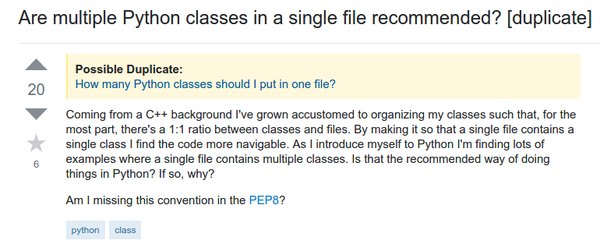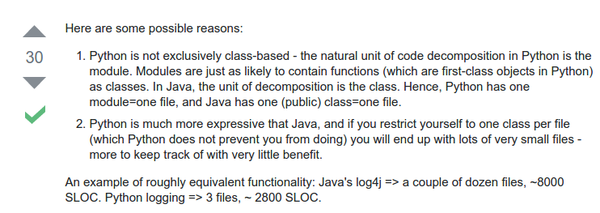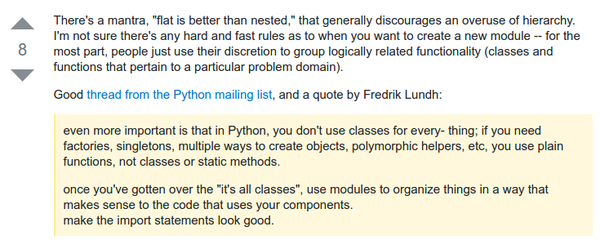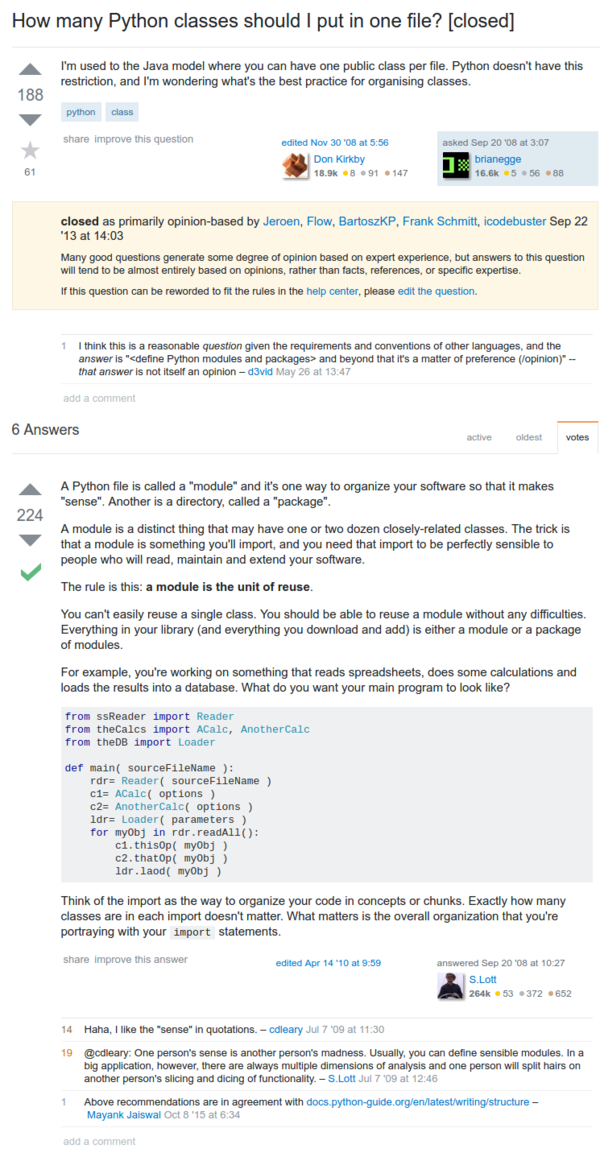
- Python programming is different than that is in C/C++.
- In C/C++ codes are managed into several file to differ the codes as it is an object.

- However, the nature of Python is not class based programming, rather more into functional programming.

- The flatter the hierarchy of the project the better it is for Python.
- There is also a similar discussion in here as well, http://stackoverflow.com/questions/106896/how-many-python-classes-should-i-put-in-one-file.
- The discussion was about "How many classes are recommended in .py file?".
- The distinction here is that Python codes was intended to be a module rather than object.
- There is no limit or convention on how many classes are supposed to be in a .py file.
- So each module contains a set of methods that can be used several times.
- Usually in C or Java the codes was more into as an object. That can only be used as the object itself (what I mean here, is that you cannot/should not use method in another class for another class in C/Java).
- What I see here, is that Python codes was more into set of static function in OOP based programming language like C or Java.
- Here is the screenshot of the discussion.




